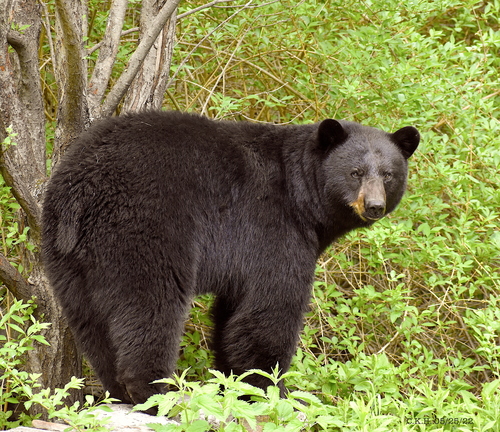
American Black Bear
The American black bear (Ursus americanus) is known for its adaptability across North America, with striking fur variations and a crucial ecological role in seed dispersal. Omnivorous and solitary, this agile climber prefers forested habitats, showcasing a secretive yet essential presence in its ecosystem.
18 years
Lifespan
100.0 - 270.0 kg
Weight
Height: 1.3 - 2.0 m
Size
Black, Tan, Dark, Brown
Color
3-7 years
Age of Sexual Maturity
6-8 months
Age of Weaning
30 mph
Top Speed
Least Concern
Conservation Status
Increasing
Population Trend
Distribution Range of the American Black Bear
Ursus americanus, commonly known as the American black bear, is native to North America. Its geographical distribution spans from northern Mexico through the United States and into Canada, including Alaska. The species is most commonly found throughout forested regions, which provide necessary resources such as food and cover.
American Black Bear's Habitat
Environmental Conditions
The American black bear occupies a diverse range of habitats, primarily preferring forest environments such as deciduous and coniferous forests, as well as boreal forests. These areas offer abundant food sources and protection. Black bears are also found in mountainous regions, swamps, and occasionally in more open areas. They adapt well to different climates, ranging from temperate rainforests with high precipitation to drier woodland areas.
Ecological Niche
As an omnivore, the American black bear plays a vital role in the ecosystem. It forages for berries, nuts, and plants, which makes it an important seed dispersal agent. Additionally, it preys on small mammals and scavenges carrion, thus contributing to the regulation of prey populations and the recycling of nutrients within its habitat. The species' adaptability allows it to thrive in varying landscapes, and it is often an indicator of healthy forest ecosystems.
Copyright @ Nature Style Limited. All Rights Reserved.
 English
English